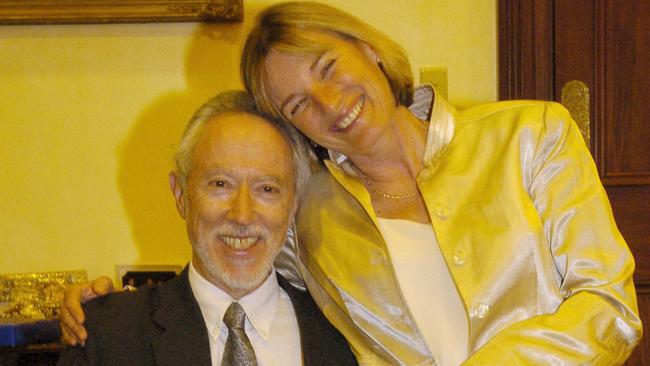JM Coetzee: The man within
Friends of JM Coetzee have marked the Nobel laureate’s 80th birthday in ways that suggest his unique place in the literary world.

It is hard to believe a writer as adamantly modern as JM Coetzee has reached an age venerable enough to warrant a volume such as this. Nearly half a century after publication of his first novel, Dusklands, his career feels ageless, largely untouched by changes in literary fashion. Yet his works have earned their status as classics by refusing to conform to older ideas of what canonical works should be.
Each novel, story or essay by Coetzee has been shaped by a determination towards experiment, whether with language, form or idea. And each is animated by engagement with issues surrounding society, politics and culture. Like all true radicals, he combines a conservative respect for what has come before with a burning sense of what should be.
Coetzee’s partner, Dorothy Driver, a notable scholar in her own right, acknowledges the uniqueness of his situation in a brief preface. Hers is not a traditional festschrift — the formal celebration of a writer or thinker in print form, assembled by intellectual colleagues, usually on the occasion of academic retirement — rather it is a “gift of love, from myself … his life companion over four decades, and from a few of those whose creative work and conversations John has admired and enjoyed in the regions where he has lived or worked”.
And the variousness of the contributions to A Book of Friends, the catholicity of the interests each brings to bear, the often-oblique angle of their respective approaches, the sheer range of their distribution in terms of language and nation, does result in a different kind of book.
In the fuller introduction that follows, Jonathan Lear, the celebrated American psychoanalyst and scholar of philosophy, backs up Driver’s effort to avoid the usual, respectful platitudes. Countering some false notions that have grown up around Coetzee, he writes:
“John is not reclusive but he is impatient with living in cliches. Quite literally, impatient: he does not have time for it. And thus he does turn away from hollowed out rituals that themselves turn us away from our in-built awareness of life and its preciousness.
“His life is an extraordinarily crafted answer to the question: what are we going to do while alive? He wants to understand how things are: what we humans are like, what animals are like, what numbers and mountains, music, spirits, and children are like. And what ethical commitments spring from all that.”
Coetzee, Lear concludes, “is a witness to what he has learned and is learning — a lifetime in literature and literary criticism that shines out to his readers and pulls us in with all the light and dark, the intensity, of a series of Rembrandt portraits … disciplining a craft to express an understanding of life and death”.
How best to respond to such a career and such a presence? The pieces that make up this volume grapple bravely with the question. For some, the answer is to stay strictly within the confines of their interests or fields of expertise.
American author Paul Auster, whose correspondence with Coetzee was gathered in a volume from 2013, furnishes an essay on several short stories by Stephen Crane, the 19th-century author of The Red Badge of Courage. His reading of these, keen depictions of young children and animals, is straightforward in explication. But despite (or because of) the lack of any clear line drawn between them and Coetzee’s work, the piece quivers with inference.
Likewise, Auster’s partner, novelist Siri Hustvedt, turns to the slippery nature of memory and its relation to family recollection in her contribution. She, too, avoids direct connection with Coetzee’s work; however, her meditation on failures of recollection when aiming at fealty to biographical veracity recalls a major piece by Coetzee, written in the early 1980s and titled “Confession and Double Thoughts” — exploring the confessional mode in writings by Tolstoy, Rousseau and Dostoevsky — about which he later wrote: “The essay, if only implicitly, asks the question: Why should I be interested in the truth about myself when the truth may not be in my interest? To which, I suppose, I continue to give the Platonic answer: because we are born with the idea of the truth.”
Some gathered here take the notion of sympathetic resonance with Coetzee and turn it into art. South African artist William Kentridge does so by translating the author’s literary practice into a pictorial diagram — a tree rendered in splattered black ink with printed labels attached, suggesting a struggle between decency, reason and anger, all of it overlaying an old copperplate accounting ledger.
Another, by Roger Palmer, takes an illustration from an old edition of Robinson Crusoe and blows it up to gallery-wall size. Accompanying text by the Scottish artist is a quotation from Coetzee’s revisioning of the Defoe classic, 1986’s Foe: an addition that transforms the image from decorative addition to a commentary on home and homelessness, exile and migration.
Others still produce personal creative works that run parallel to Coetzee’s life and art without touching it at all. One poem of the three provided by David Malouf reflects upon his own ageing in ways that remain wholly personal and yet germane. Birthday Poem, which revisits an anthology piece from his early career, proceeds:
Eighty-five years,
compiuti as the Italians
say, and still waiting for old age,
senilita , to catch up
but coming closer
and ends with typical exquisiteness:
Sunrise, I throw back
five metres of white translucent
nylon on the blue
infinities of a day, like all
the many days before it, millennial
light-years in the making.
Even those translations included from the Spanish by Latin American authors, or in one instance from Afrikaans, can seem unrelated to Coetzee’s work while following him in the belief that, despite linguistic and geographic differences, the experiences of writers from many parts of the southern hemisphere emerge out of shared circumstance.
The experience of colonialism and its aftermath. The extirpation or displacement of indigenous peoples. A position of economic and political subservience to older, Northern, Imperial centres: all these phenomena are as true of Argentina as Australia, and they are certainly true of South Africa, Coetzee’s country of birth.
Eva Hornung’s offering is different still. The Australian author has built her career on efforts to use language to describe and empathetically enter into the animal realm.
Hornung’s chapter, which is culled from a longer work about tensions between a young group of vegan activists and an older female farmer, manages to be self-contained yet complementary towards Coetzee, an author for whom the rights of animals have been a lifelong concern.
Lighter efforts include Peter Goldsworthy’s cock-and-bull story, in which the narrator — a medical doctor with literary interests (sound familiar?) — is visited by the Australian author Elizabeth Costello for a check-up.
That Costello is herself a fictional stand-in for Coetzee, the subject of several of his works, gives the narrative a suitably droll, “meta” quality.
A Book of Friends does contain a few more earnest efforts — pieces by scholars who know Coetzee’s work well and write directly to its qualities and interests.
Robert Pippin’s essay on Coetzee’s Jesus trilogy is a case in point. Decrying the lazy and superficial criticism that has characterised the reception of these late works, Pippin sets out to show how the novels work beneath the hood, unpicking the economy and compression of their language and symbolism, using Bach’s music as his clinching example:
“To fail to appreciate the sexual energy of the Bach violin sonatas, or the melancholy of the St. Matthew Passion, or what can only be described as the calm frenzy of the Well-Tempered Clavier, is to mistake one sort of attempt at communion with a listener through some shared generality of emotional resonance, with another sort that aims at it with a compression of elements so well-formed that its implicit wealth can seem to some listeners like poverty.”
The signal virtue of the love, admiration and attentiveness shown by the contributors in this volume is that it may convince many readers who have been wary of Coetzee’s work — unnerved by its apparent difficulty, put off by its supposed aridity — not to make a similar mistake.
Geordie Williamson is The Australian’s chief literary critic.
A Book of Friends: In Honour of JM Coetzee on his 80th Birthday




To join the conversation, please log in. Don't have an account? Register
Join the conversation, you are commenting as Logout